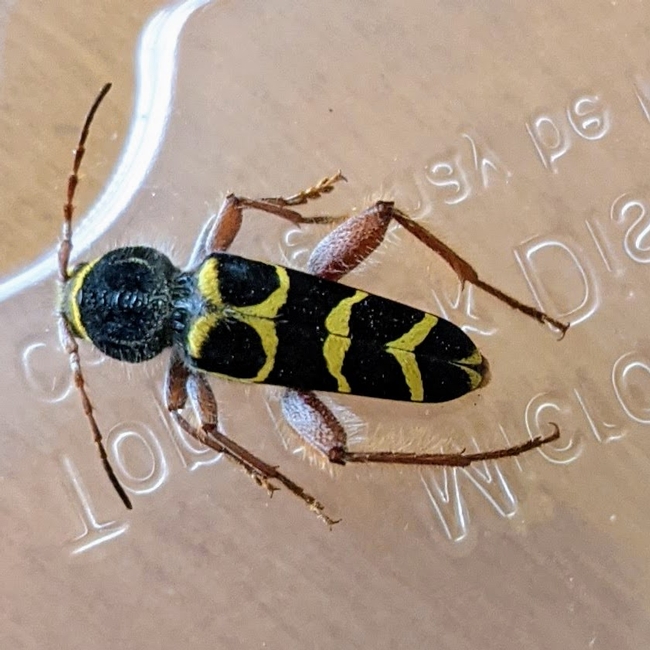Mar 31, 2021
There is a lot of variety in the job of a farm advisor. Some days I'm working with water quality. Other times I answering tree questions. Today I had an insect to identify.
It took a little work, but the insects were banded ash borers.
I guess it's not a particularly common insect in California, but apparently it is here in Owens Valley.
I thought it might be useful to go over the steps I used to identify it, in case there are other amateur insect sleuths out there!
First I noted that the insect had a hard shell instead of forewings. That means it's a beetle (Order Coleoptera). Since that's the biggest insect order, that doesn't narrow it down much, but it did have some distinguishing features:
- obvious yellow stripes
- a slender form
- long antennae
- sturdy legs
That was enough to get me on the right path.
I suspected it was a long-horned beetle based on it's shape, but being an amateur that was an educated guess. Those are wood borers (Family Cerambycidae).
Getting closer but I needed to be sure I was on the right path. I often find a good place to narrow down an insect search is bugguide.net. If you use the "browse" feature it shows a collection of specimens with pictures in that taxonomic group. I navigated to the long-horn beetles. That's no easy task. Beetles are such a large group there are things like sub-orders tribes and super-families to get through which is a chore if you're not an entomologist!
Another site that has many good pictures of insects with where they were spotted is inaturalist.org. The only problem is that searches are not able to be filtered by any taxonomy other than insect so there is a lot of scrolling. And the insect may not be there! It's best when you want to check on something you already have a close ID for.
Eventually I found the genus Neoclytus. This insect resembles a Neoclytus we had in Arkansas so I felt that at least I had the genus correct. After that it got hard.
At least 3 species on bugguide.net looked similar to mine. Of the 2 best matches, one was strictly in eastern North America. The other, N. caprea, was mostly in eastern North America also, but sometimes found in the Great Basin. No mention of California on BugGuide. That was disconcerting. Was I right?
There is an obscure online resource listed on bugguide that's a catalog of Cerambiycidae which thankfully had this insect in it. The only pictures in the catalog were in the California State Arthropod Collection and 2 were collected in Big Pine. Bingo! It looked exactly like my insect. Neoclytus caprea was a match.
The common name for this insect is the banded ash borer, and sure enough, my specimen came from an ash tree.
This is not a major pest, but it is common in firewood. The critters can emerge in winter when firewood from ash trees is brought indoors but not used all that quickly. In our area, these emerge from trees in March or April. Since they only live in living wood, there is no risk of your furniture being attacked. Virginia Tech has a fact sheet on them.
It took about 15 minutes of work, but it was rewarding to get the species level ID correct!
As a side note: this is NOT the insect you may have heard on the news that is causing much concern across the country: the emerald ash borer.
